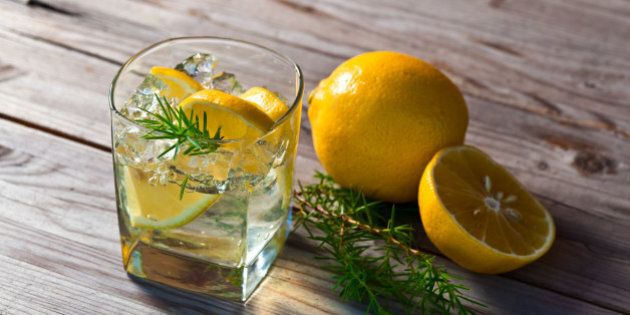
Gin. It's probably the most fun you can have with juniper berries. After all, what says "summer" more than a G&T in a sunny beer garden? And if you haven't sipped on a gin martini in a glass chilled with liquid nitrogen -- you don't know what you're missing.
Though gin has always had its own following, in recent years it has stood in the shadow of rival white spirit -- vodka. However, according to a recent study, gin consumption is on the rise in Australia and could even overtake vodka in the popularity stakes.
While just over 1.1 million Australian adults drink vodka in an average four-week period (excluding in ready-to-drink beverages) -- this statistic has barely changed over the last five years, despite overall population growth. However gin has gone from strength to strength, with the average number of monthly gin drinkers growing from 633,000 adults to 860,000 during the same period.
Meanwhile, tequila and white rum are falling out of favour, with white rum sinking from 446,000 drinkers in 2010 to 324,000 now, and tequila going from 336,000 drinkers to 312,000.
So what is it about gin that has people restocking their liquor cabinets?
"I think people are getting bored with things like vodka, because, in my opinion, the consumer is becoming more sophisticated and looking for new products," said Griffin Thomas Blumer, co-founder of Poor Tom's Gin.
"Gin is a product you can do a lot with. There's almost an infinite array of flavours you can potentially put with a gin -- while it has to be distilled with juniper berries, and it has to be a white spirit -- beyond that you can put whatever you like in it as long as it takes good."
Blumer likens the recent appreciation of gin to that of the craft beer boom, stating that, as the Australian food and beverage culture continues to develop, so too does the tastes of consumers.
"I think people are figuring out most vodkas taste pretty much the same, and they want a bit more flavour," Blumer told The Huffington Post Australia. "It's a similar vein to the craft beer movement -- people got sick of drinking the same lager or the same mass produced beer. When they go out they want new experiences and craft beer filled that need."
While cucumber and lime tend to be the go-to garnishes for gin (though many gin die-hards will insist there is no need for garnishes at all) there has been a recent trend to go garnish-crazy when it comes to gin cocktails. The reason?
"I think there is so many flavours in gin, often, when you drink it it’s hard to identify any particular one," Blumer said. "People with super developed pallets might be able to pick up on them, but otherwise, I think the reasoning is often served with a garnish is to highlight a certain aspect of the flavour.
"In that way, there can be more enjoyment of the gin, because people want to know what they are drinking."
In terms of the old wives tale that drinking gin makes you depressed, Blumer says there's no truth to it.
"With all due respect to all of the people out there who think certain spirits make them happier or unhappier -- gin has no chemical differences to vodka except for the fact there are more flavour compounds in there," Blumer said.
"Unless you are arguing juniper molecules make you depressed, gin shouldn’t have made you any more depressed than other spirits.
"In fact, white spirits give you a far less extreme hangover than dark spirits or wine or beer. A white spirit is highly refined and doesn’t have any of the volatile alcohols you will find in a dark spirit, or a beverage that hasn’t been distilled like a wine or a beer."
So with that in mind, pop down to your local and order a G&T, stat. Or if you want to stay indoors, try your hand at making one of these great cocktails below.